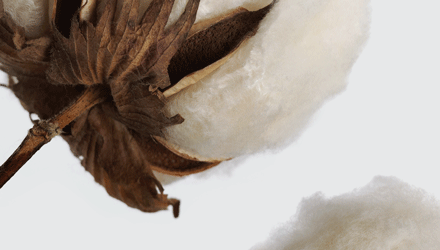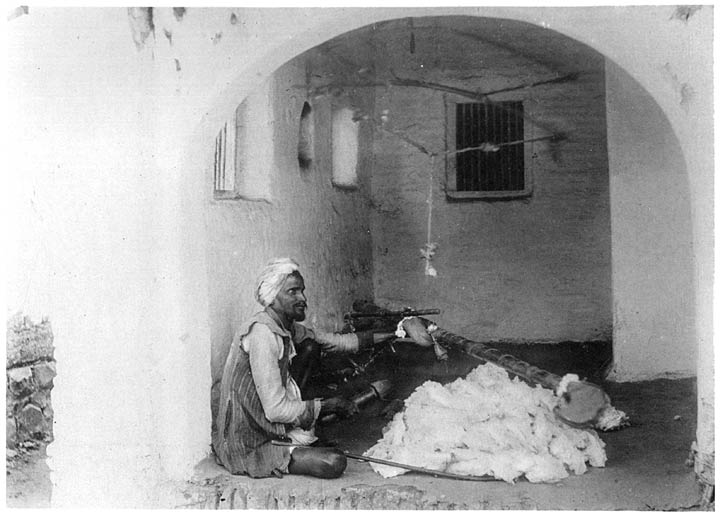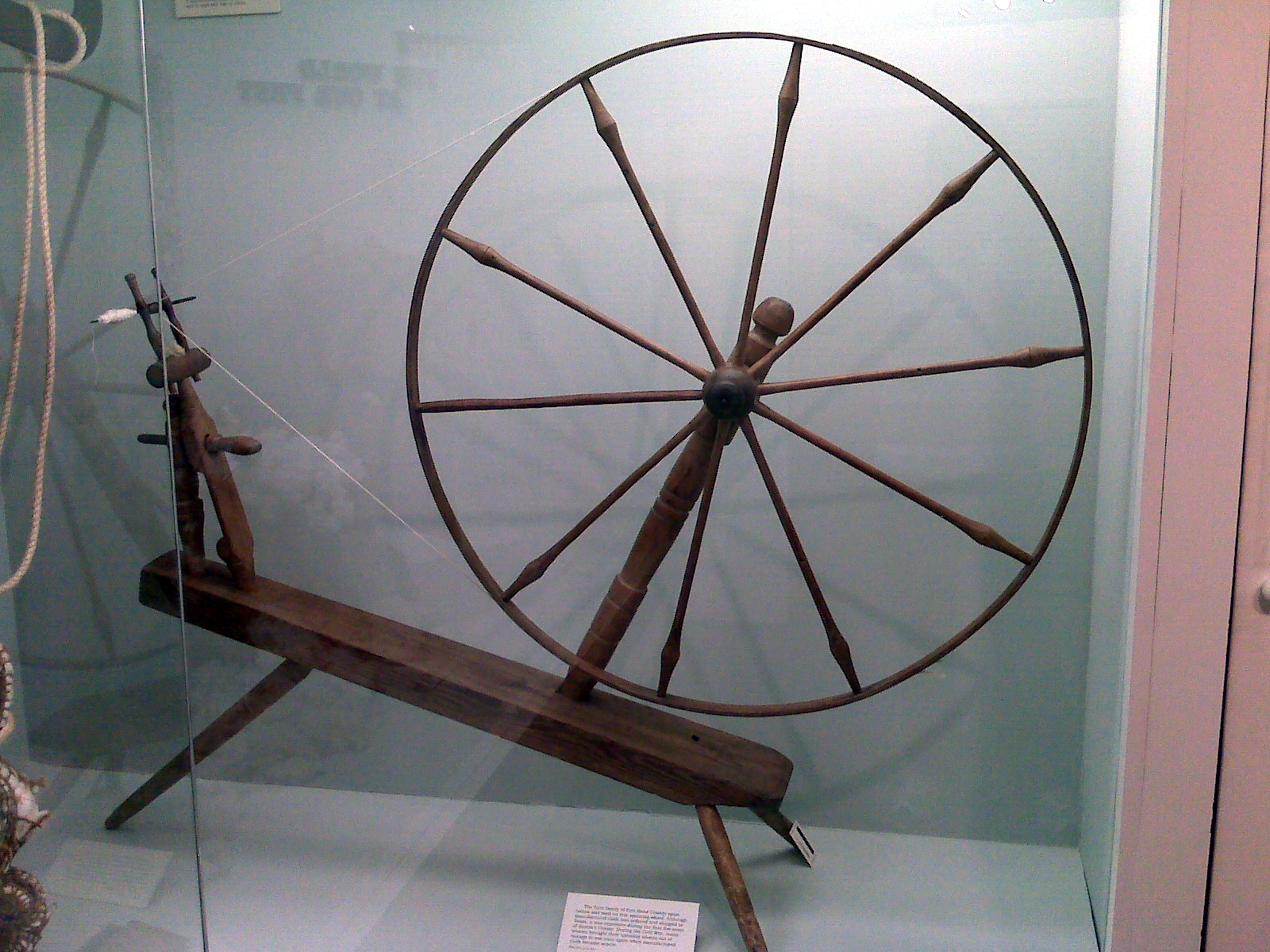
Cleaning:
Since around 500 BC, cotton weavers in India often used ginning, bowing, and spinning to clean cotton and turn it into thread and yarn. This initial version of the cotton gin was difficult to use as it only had one roller, often made of wood or metal. First appearing in India, this version, as well as the dual-roller version (off of which Eli Whitney’s cotton gin was based) spread from India to Asia and eventually the European countries. In dual-roller ginning, also known as Churka or Charki, the cotton was pushed through two rollers that spun with the aid of a hand crank, until the seeds were all removed.
After the seeds were taken out with the Charki, the dirt, twigs, and anything else still trapped in the cotton would need to be removed. This was a duty of the Bahna, a person of the caste of those who cleaned cotton. The Bahna would use ginning or bowing (with an instrument called the pinjan, or its smaller counterpart the dhunkara) to do this.

The Bahna would draw a mallet across the bow string, creating vibrations that would help to separate the cotton from the dirt and debris. However, this method was considered clumsy and time-consuming. Eventually, the cotton gin would take over the task of the pinjan and the Bahna caste would be forced to turn to other forms of labor.
The cotton gin invented by Eli Whitney was based off of the charki. This new cotton gin used steel teeth and stronger pulleys to separate fibers from their seeds, making it easier for slaves in North America to work with the short-staple cotton that was more predominant in areas further away from the water.

As the cotton gin became more industrialized, water power was used to increase productivity, and larger versions were created to handle more and more cotton, making the product cheaper while increasing the number of slaves brought from Africa to the Western world—more labor was required to help clean and spin the cotton into thread and cloth.
To spin the cotton fibers into thread, the spinning wheel was used. To do this, the spinner separates the cotton into slender sections which will be twisted until they are the desired thickness. As the sections are twisted into each other, the cotton quickly turns into thread or yarn to be used for making clothing, bags, and other materials. The traditional spinning wheel is still used throughout Asia, but the more commonly seen version is the type used by Western women.

Today, we use industrial cotton gins for cleaning and weaving, although other countries still engage in the traditional forms of cottons cleaning and spinning.

Looms are used to make cloth out of thread or yarn by weaving the threads in and out of one another with varying levels of tension. The concept is similar to knitting or crocheting. While hand looms are still used in older countries, industries tend to use mechanical looms to make more product.
For more about cotton, check out Cotton: The Fabric That Made the Modern World by Giorgio Riello.
all images courtesy of wikimedia and gutenberg.org.
Latest Comments
Have your say!